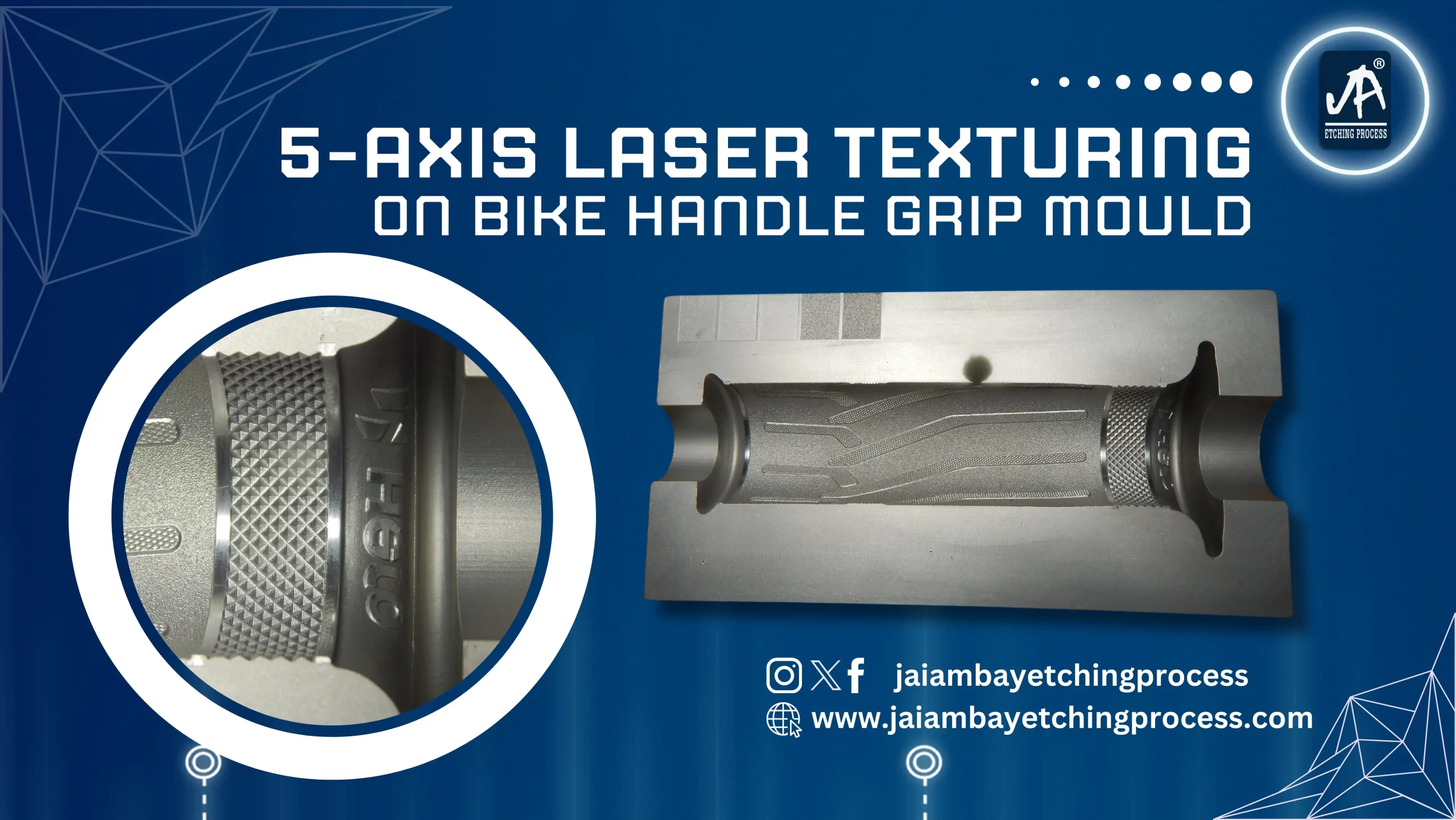Mastering Grip: Exploring 5-Axis Laser Texturing for Moulds
Have you ever held something that felt perfect? Whether it’s a favourite toy, appliance, or door handle, how it feels when you hold it is important. This feeling of comfort and control doesn’t happen by accident – it’s the result of careful design and technology. In this blog, we will learn about the fascinating world of perfect grip and how these methods like 5 axis laser texturing, as well as chemical etching, play a big role in achieving this goal.
Understanding Grip Perfection with 5 Axis Laser Texturing:
- What is Grip Perfection? A perfect grip means making sure that the things we are holding feel comfortable and secure in our hands. Be it bicycle handlebars, kitchen appliances or handheld devices, a correct grip ensures that we can use these items safely and effectively.
- Introducing 5-Axis Laser Texturing: This is a cutting-edge technology that can engrave precise and complex patterns into mold surfaces. It uses laser beams that can rotate in five different directions to create textures and patterns that enhance grip and tactile feedback.
- Why is it Important? The importance of a perfect grip cannot be underestimated. Whether improving safety, improving usability, or making products more enjoyable to use, Grip Perfection ensures users have a positive experience with the objects they interact with every day.
Exploring 5-Axis Laser Texturing and its Importance:
- Enhancing Safety: In many situations, a secure grip is critical to safety. Whether you’re gripping your bicycle’s handlebars or a power tool, a strong grip can prevent accidents and injuries. 5-axis laser texturing ensures that the mould surface provides maximum grip even in challenging conditions.
- Improving Usability: Have you ever had trouble holding onto something because it was too slippery? Five-axis laser texturing solves this problem by creating a textured surface that provides superior traction and grip. This makes it easier to use products ranging from kitchen appliances to handheld devices.
- Optimizing Performance: Grip perfection isn’t just about comfort – it can also enhance performance. Whether it’s improving the handling of a bike or the precision of a handheld tool, a secure grip allows users to exert more control and achieve better results.
Understanding Chemical Etching:
- An Alternative Approach: Chemical etching is a traditional method of creating textured surfaces by using chemicals to remove material from the surface of a mould. While it may not offer the same level of precision as laser texturing, it is still a valuable technique in certain applications.
- Cost-Effective and Efficient: Chemical etching is often preferred for its cost-effectiveness and efficiency. It can be used to create textured surfaces quickly and at a lower cost compared to laser texturing, making it a practical choice for mass production.
- Complementary to Laser Texturing: In some cases, chemical etching and 5 axis laser texturing can be used together to achieve the desired results. For example, chemical etching can be used to create a rough surface texture, which can then be refined further using laser texturing for added precision.
Conclusion:
In conclusion, grip perfection is an important aspect of product design that impacts safety, usability, and performance. 5-axis laser texturing is a powerful tool that allows creation of precise and complex textures on molds, enhancing grip and tactile feedback. While traditional methods such as chemical etching still have their place, the precision and versatility of laser texturing make it an indispensable tool for achieving grip perfection in a wide range of applications. By taking advantage of the latest technologies and techniques, manufacturers can ensure that the products they create not only look good but also feel good in the hands of their users.


